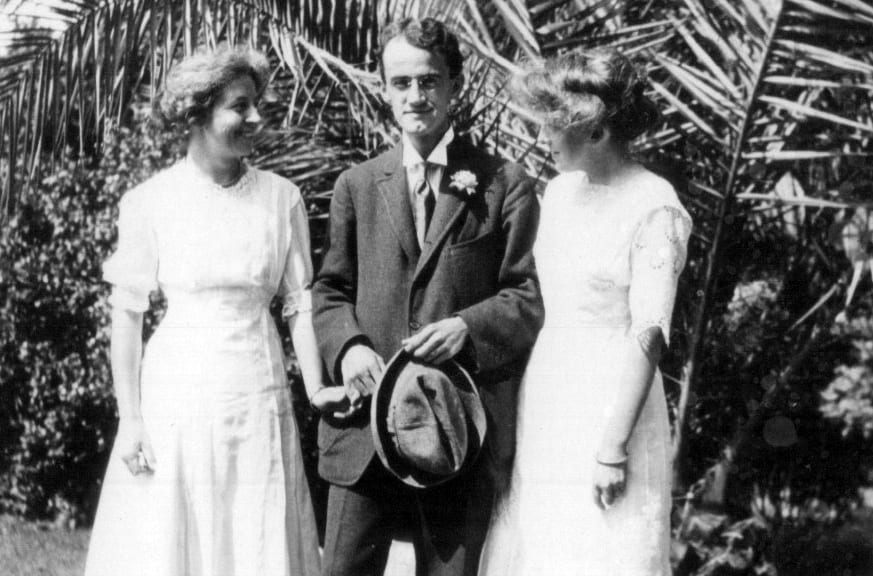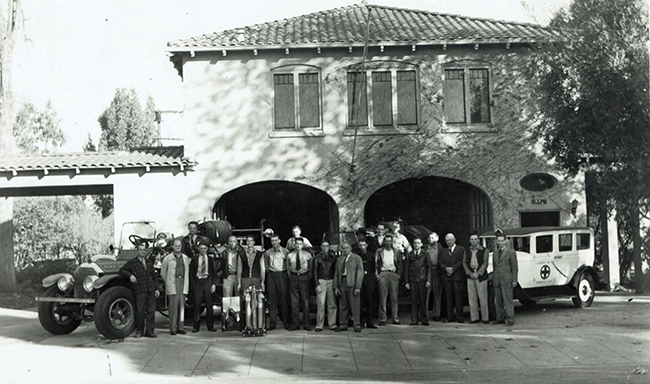From the files of Claremont Heritage: Leila Ackerman

by John Neiuber
“I never thought I was breaking a glass ceiling. I just had to do what I had to do, and it never occurred to me not to.” — Marian Wright Edelman, founder, Children’s Defense Fund
This quote is apropos to Leila Ackerman, who was the secretary (manager) of the Claremont Chamber of Commerce from 1923 to 1944. She assumed the position of secretary of the chamber just three years after the ratification of the 19th Amendment, which legally guaranteed women the right to vote, and at the time elevated women just one step above being called their husband’s or father’s property.
Her appointment to the position was preceded by being nominated by then chamber president, George Griswold, and voted down three times before finally being hired in August of 1923. She replaced W.C. Hollister, who had served for six months and whose salary the chamber could not afford.
Leila Valentine Ackerman (she preferred to be called Lela) was born February 22, 1884, in Ramsey, Bergen County, New Jersey. She attended elementary school in Ramsey, which sat on the main line of the Erie Railroad, and high school in Asbury Park, New Jersey. The family tended farmlands that were given to her Valentine ancestors as a land grant in compensation for their services during the Revolutionary War. Several of the Valentines had signed petitions to King George to release the Colonies.

Lela Ackerman was the chamber manager for 21 years from 1923 to 1944.
Lela’s parents were both dead by the early part of the 20th century and the rest of the family decided they needed a change in location. Lela would recall arriving at the original Santa Fe railway station at the foot of Yale Avenue when she and her brother came to Claremont on December 23, 1910. Their sister, Martha, joined them in the summer of 1911. They lived in Pomona first and then bought a house in June 1911 at 238 West 10th Street. They later built a house next door at 248 West 10th Street.
They came to California because of the ill health of Lela and Martha’s brother, Arthur, who suffered from tuberculosis. Many weekends and vacations were spent in Palm Springs, where they traveled by train or in their car, a 1912 Mitchell, and where Arthur could benefit from the warm, dry air. They stayed in the tent villages that surrounded the city’s oasis, hoping the desert air might improve their brother’s health. Unfortunately, Arthur died from tuberculosis in 1916 at the age of 30.
Martha Ackerman was two years older than Lela. She was a teacher all her adult life and taught in Binghamton, New York before joining her brother and sister. Martha became a beloved third grade teacher at Claremont Grammar (now Sycamore) School and enjoyed wide acclaim in town as a specialist in the primary grades. Martha served as Claremont’s first woman principal at the grammar school from 1924 until 1936 and died of cancer in 1937 at the age of 55.
Lela had been employed at the Claremont Inn as secretary to the manager, was secretary to the principal at Claremont High School, served in an important committee position for the Claremont Red Cross during World War I, was one of the Claremont Community Players, organized activities for single people in town, started the first Fourth of July celebrations (even building fireworks in her garage) and volunteered with the chamber on the first Los Angeles County Fair exhibit.
Lela endured rejection and the 18-month hiring process, despite a record well known to most of the chamber’s board members. It was difficult for a single woman to secure a responsible job in those days and too often, as in Lela’s case, qualified women were left out of the running. But she did endure, and Lela Ackerman would do more than nearly anyone to shape the business and civic life of Claremont.

The first City Hall was part of the City Beautiful initiative, and consisted of the fire and police stations on the ground floor and city offices on the second floor.
Lela was called an activist, organizer, visionary, city planner, gardener, advocate and fun-loving person. She brought the City Beautiful Movement to Claremont, and through the chamber, a City Beautiful Club was formed and continued until the late 1960s. In Southern California, the Pasadena City Hall, auditorium, and library are examples that achieve the unity sought in City Beautiful plans. Claremont’s civic center consisting of the Santa Fe Depot, fire and police station, city hall, the original Claremont Library, Claremont post office, and chamber of commerce building (now the city manager’s office) were part of Claremont’s involvement in the City Beautiful movement led by Lela Ackerman.
Lela oversaw the formation of the first city planning commission. She had the vision to see that the City Beautiful Club should support not only civic center improvements but also comprehensive planning of the entire city. The board of trustees (city council) embraced the concept and appointed the first city commission in 1925. The city and the chamber each donated $500 for an “artistic” city plan. She retained city planners David Allison and Charles Cheney, and renowned landscape architect Ralph Cornell to develop the plan. Cornell’s arrangement included one hour of free landscape consultation for chamber members.

Outside the Claremont Library in 1928. The first city library was developed as a result of the City Beautiful Plan and designed by Pasadena architects, Marston and Mayberry.
During the Depression, Lela provided welfare assistance by doing fieldwork investigations to contact families in need. One of her last initiatives was the vision to form the postwar planning committee. The Chamber took the lead by creating the committee in 1944. When she retired, the committee took over from where she left off.
Lela Ackerman retired from the chamber in 1944 at 60 years of age. Asked what her greatest accomplishments were she often cited the chamber office and proper zoning. The chamber directors cited many more: Good city planning, sewers, paved streets, sidewalks, trees, public library, garbage collection, tennis courts, abolishing chicken yards, the San Antonio Dam for flood protection, fire station, post office, library, Village Theatre, moving the location of Arrow Highway from Sixth Street, and establishing the chamber as the voice of progressive citizens.
No person since Claremont founder Henry Palmer had promoted or accomplished so much for the City of Claremont as Lela Ackerman.










0 Comments